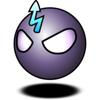Piano: Learning to count the notes on the staff
Ok im having trouble couting notes is there any good tutorials? like i know if there is 2 quarter, 1 half it would be 1 2 34 but that is easy. I dont get it when there are more notes on the staff and when you get to 8th and sixteenth notes and when you get a tiny dot by the note increasing its value.
I'm a novice C++ programmer, wanting to succeed and learn. If you ever want to be my friend or just talk add me.MSN IM: hazardx_anime@hotmail.com
Is it that you "dont get it", or is it just that you can't keep up? The division is extremely simple (ignoring stuff like dotted notes for now), it's just a question of being able to do it and process the rhythm in real time.
With rhythmic stuff in particular, there is only one answer. Slow it down. Way down. Way the hell down. Is it 120 bpm? Run it at 30. Can't do it at 30? Do it at 10 if you have to.
With rhythmic stuff in particular, there is only one answer. Slow it down. Way down. Way the hell down. Is it 120 bpm? Run it at 30. Can't do it at 30? Do it at 10 if you have to.
SlimDX | Ventspace Blog | Twitter | Diverse teams make better games. I am currently hiring capable C++ engine developers in Baltimore, MD.
Yeah, it's just fractions. 8 sixteenth notes plus 1 quarter note plus 2 eighth notes fills a bar, just as 8/16 + 1/4 + 2/8 = 1.
It only really gets awkward when you move away from 4/4, because then you have foolishness such as a measure consisting of three quarters rather than four, but all the other principles remain the same.
It only really gets awkward when you move away from 4/4, because then you have foolishness such as a measure consisting of three quarters rather than four, but all the other principles remain the same.
"I dont get it when there are more notes on the staff and when you get to 8th and sixteenth notes and when you get a tiny dot by the note increasing its value."
This statement sounds like you're having a hard time when piano music has layers within one stave. If this is the case, pay close attention to the stem (the little flags that branch off) direction of each note.
Piano music often times has layers where the hand has to play more than one music idea. This can be tricky and may require some really slow practice, as was already suggested.
The dotted notes increase their value by 1/2. So if you have a quarter note which takes up one beat, a dotted quarter note will take up 1.5 beats. Are you using a counting system of any kind?
"1 and 2 and 3 and 4 and" is an example of one that helps place 8th notes.
"1 e and a 2 e and a 3 e and a 4 e and a" is an example of one that helps place 16th notes.
Notice how both use the big beats (1,2,3,4) as anchors and then fills in the space inbetween with either one or three events. Also, consider using a metronome because this can help you really develop a steady tempo and show you where you're rushing or dragging while playing.
When first learning this, it might be a good idea to mark anchor marks in the music. Mark where each change happens and then slowly play it while counting it aloud. Make sure you're only doing one hand at a time at first then build up to two hands. This is a good starting point, but don't do this forever. Otherwise you'll never truly develop and be able to play harder music without writing out the counts first.
Another idea is to make sure the level of piano music you're trying to play is appropriate. Don't pick out too hard of a challenge. Sure, pushing forward is good...but don't over do it. Give yourself as much of a chance to succeed as possible. My final point is make sure you observe the finger edits from the editor (if they're in there) and stick to it! This can help ensure that you're playing the line with the proper fingering and will help you memorize the piece faster instead of changing the way you play it each time.
I hope that helps,
Nathan
PS- Have you looked into beginner piano books? Those might be a great resource for you!
This statement sounds like you're having a hard time when piano music has layers within one stave. If this is the case, pay close attention to the stem (the little flags that branch off) direction of each note.
Piano music often times has layers where the hand has to play more than one music idea. This can be tricky and may require some really slow practice, as was already suggested.
The dotted notes increase their value by 1/2. So if you have a quarter note which takes up one beat, a dotted quarter note will take up 1.5 beats. Are you using a counting system of any kind?
"1 and 2 and 3 and 4 and" is an example of one that helps place 8th notes.
"1 e and a 2 e and a 3 e and a 4 e and a" is an example of one that helps place 16th notes.
Notice how both use the big beats (1,2,3,4) as anchors and then fills in the space inbetween with either one or three events. Also, consider using a metronome because this can help you really develop a steady tempo and show you where you're rushing or dragging while playing.
When first learning this, it might be a good idea to mark anchor marks in the music. Mark where each change happens and then slowly play it while counting it aloud. Make sure you're only doing one hand at a time at first then build up to two hands. This is a good starting point, but don't do this forever. Otherwise you'll never truly develop and be able to play harder music without writing out the counts first.
Another idea is to make sure the level of piano music you're trying to play is appropriate. Don't pick out too hard of a challenge. Sure, pushing forward is good...but don't over do it. Give yourself as much of a chance to succeed as possible. My final point is make sure you observe the finger edits from the editor (if they're in there) and stick to it! This can help ensure that you're playing the line with the proper fingering and will help you memorize the piece faster instead of changing the way you play it each time.
I hope that helps,
Nathan
PS- Have you looked into beginner piano books? Those might be a great resource for you!
Nathan Madsen
Nate (AT) MadsenStudios (DOT) Com
Composer-Sound Designer
Madsen Studios
Austin, TX
Quote:
PS- Have you looked into beginner piano books? Those might be a great resource for you!
Or a teacher/following lessons.
Nadsan, may I ask you where you get the time for replying with such long posts?
What do I expect? A young man's quest to defeat an evil sorceror while discovering the truth of his origins. A plucky youngster attended by her brutish guardian. A powerful artifact which has been broken into a small number of artifactlets distributed around the world.What do I want? Fewer damn cliches. - Sneftel
I guess I just type fast. :)
Nathan Madsen
Nate (AT) MadsenStudios (DOT) Com
Composer-Sound Designer
Madsen Studios
Austin, TX
This topic is closed to new replies.
Advertisement
Popular Topics
Advertisement
Recommended Tutorials
Advertisement








.png)
